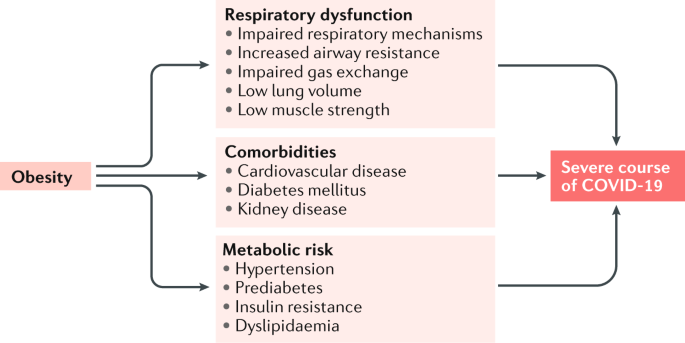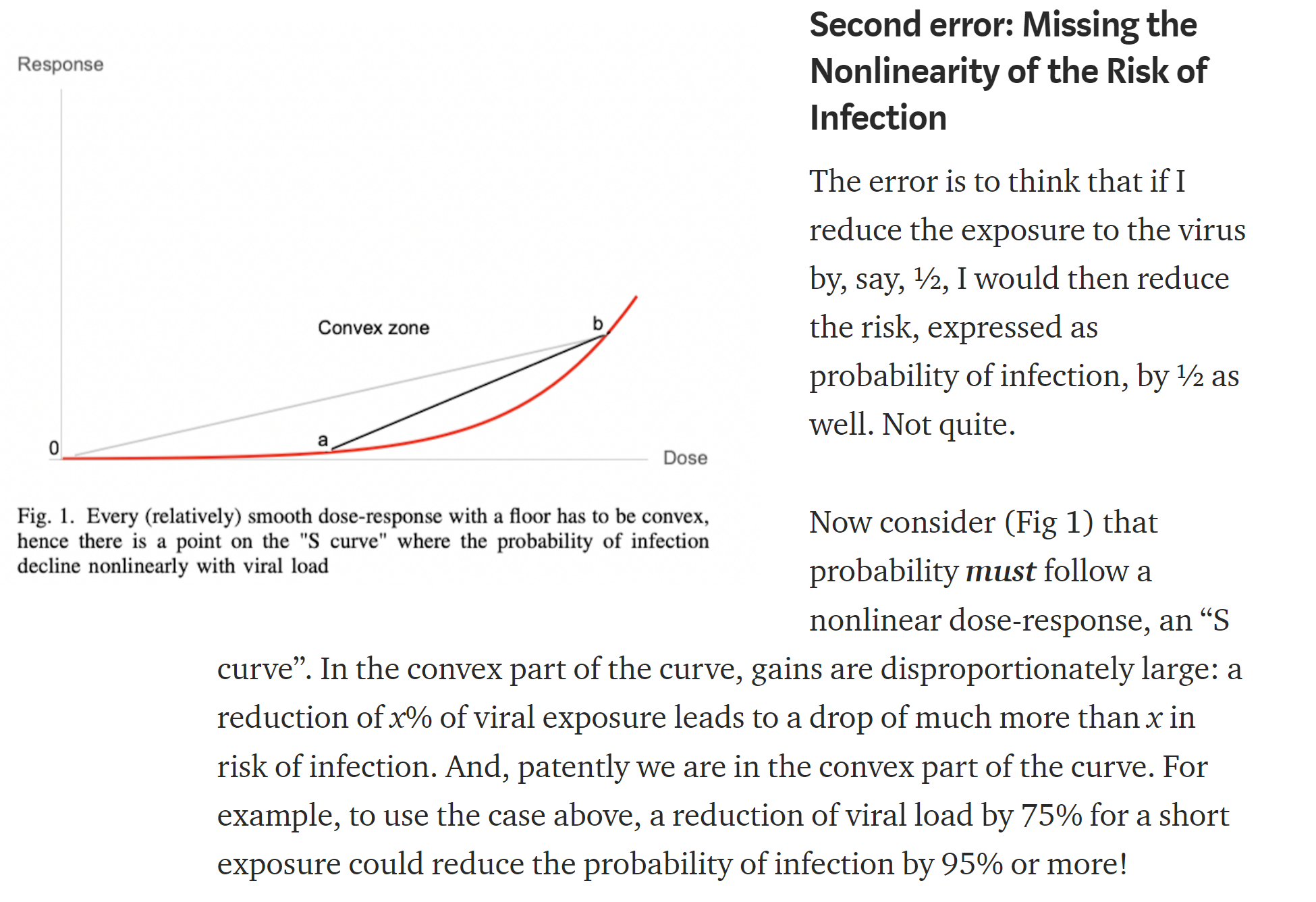On top of the news yesterday about the importance of face masks in preventing COVID spread in that salon in Missouri, comes a really well done research article (peer-reviewed and in the prestigious Proceedings of the National Academy of Sciences) saying essentially the same thing. Rather than summarizing it, here's the abstract, so people can read for themselves. The bottom line is if one can't maintain social distancing in public (indoors or outdoors), which is very difficult in some work, travel and entertainment situations, wear a mask. Period.
Abstract
Various mitigation measures have been implemented to fight the coronavirus disease 2019 (COVID-19) pandemic, including widely adopted social distancing and mandated face covering. However, assessing the effectiveness of those intervention practices hinges on the understanding of virus transmission, which remains uncertain. Here we show that airborne transmission is highly virulent and represents the dominant route to spread the disease. By analyzing the trend and mitigation measures in Wuhan, China, Italy, and New York City, from January 23 to May 9, 2020, we illustrate that the impacts of mitigation measures are discernable from the trends of the pandemic. Our analysis reveals that the difference with and without mandated face covering represents the determinant in shaping the pandemic trends in the three epicenters. This protective measure alone significantly reduced the number of infections, that is, by over 78,000 in Italy from April 6 to May 9 and over 66,000 in New York City from April 17 to May 9. Other mitigation measures, such as social distancing implemented in the United States, are insufficient by themselves in protecting the public. We conclude that wearing of face masks in public corresponds to the most effective means to prevent interhuman transmission, and this inexpensive practice, in conjunction with simultaneous social distancing, quarantine, and contact tracing, represents the most likely fighting opportunity to stop the COVID-19 pandemic. Our work also highlights the fact that sound science is essential in decision-making for the current and future public health pandemics.
https://www.pnas.org/content/early/2020/06/10/2009637117
Additional compelling analysis of why masks work from Nassim Nicholas Taleb, the noted hedge fund manager, mathematical statistician, essayist, and most famously, author of the great book, "The Black Swan: The Impact of the Highly Improbable" which anticipated such a Black Swan event, in the 2008 financial crisis (from which he and his investors profited handsomely). His article, in Medium, does a fantastic job of outlining the key flawed assumptions that many have made along the way in not calling for masks to be worn by everyone from the beginning.
These are: "1) missing the compounding effects of masks, 2) missing the nonlinearity of the probability of infection to viral exposures, 3) missing absence of evidence (of benefits of mask wearing) for evidence of absence (of benefits of mask wearing), 4) missing the point that people do not need governments to produce facial covering: they can make their own, 5) missing the compounding effects of statistical signals, 6) ignoring the Non-Aggression Principle by pseudolibertarians (masks are also to protect
others from you."
I've talked about #1 many times with regard to how much better it is with everyone wearing masks: if one looks at most interactions as being pair-wise, reducing the risk of transmission by half for one person wearing a mask means that for a pair of people, the risk is reduced by 3/4 (1-(1/2 x 1/2)). And worn properly, as per research shared before, the risk reduction for one person wearing a mask can be 75% or more (95% for an N95 mask), meaning for a 75% reduction for 2 people, that's a 94% overall reduction.
Point #2 on non-linearity is explained really well by Taleb with a nice graphic of the dose response curve, below, where it's well known that reducing the viral load exposure by 1/2, for example, produces a much lower risk of infection than 1/2, as dose response curves are usually non-linear near the floor of the dose. Very few have articulated this well, but it's fundamentally why I've been harping on the masks inside or outside if one can't keep to >6 feet distance, which is a second example where non-linearity comes into play. The dose one gets at 3 feet, for example, isn't 2X the dose one would get at 6 feet - it's about 4 times more (the dose should be proportional to the square of the distance difference, i.e., 36 vs. 9, which is non-linear, instead of 6 vs. 3, which would be linear).
The rest of the article is pretty good, too. I especially like his way of phrasing #3, i.e, "mistaking absence of evidence for evidence of absence." And we've talked before about how the "libertarian" argument falls apart vs. the "do no harm" principle. Anyway, the one thing I think he missed was sharing how effective mask wearing has been in many countries, especially Japan, which has not implemented all the interventions some other countries have (a lot less testing than SK, for example) and no lockdowns, but they're close to 100% compliant with mask-wearing and have fantastic results so far in achieving low trasnmissions/deaths. Worth reading and please, wear your mask if you're not sure you can keep to more than 6 feet from others.
Taleb Article in Medium


